The iPhone 16 Is Here With New Camera Control and a Massive Performance Boost
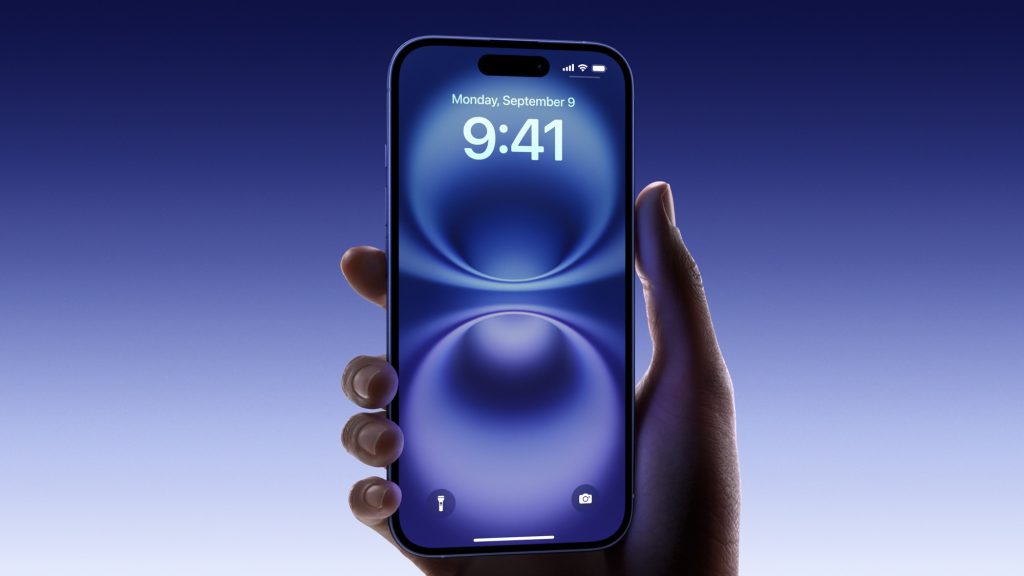
As expected, the highlight of Apple’s Glowtime event was the unveiling of its new iPhone 16 lineup. While the rumor mill meant we didn’t get too many surprises this year, the standard iPhone 16 has taken another significant leap ahead, continuing a trend Apple began last year.
After a few years of iterative upgrades, last year’s iPhone 15 saw some huge camera improvements, and now the iPhone 16 lineup is adding to those with the same advanced Camera Control as this year’s Pro model, plus a significant performance boost that readies it for Apple Intelligence and AAA gaming. Here’s what’s new.
The Design
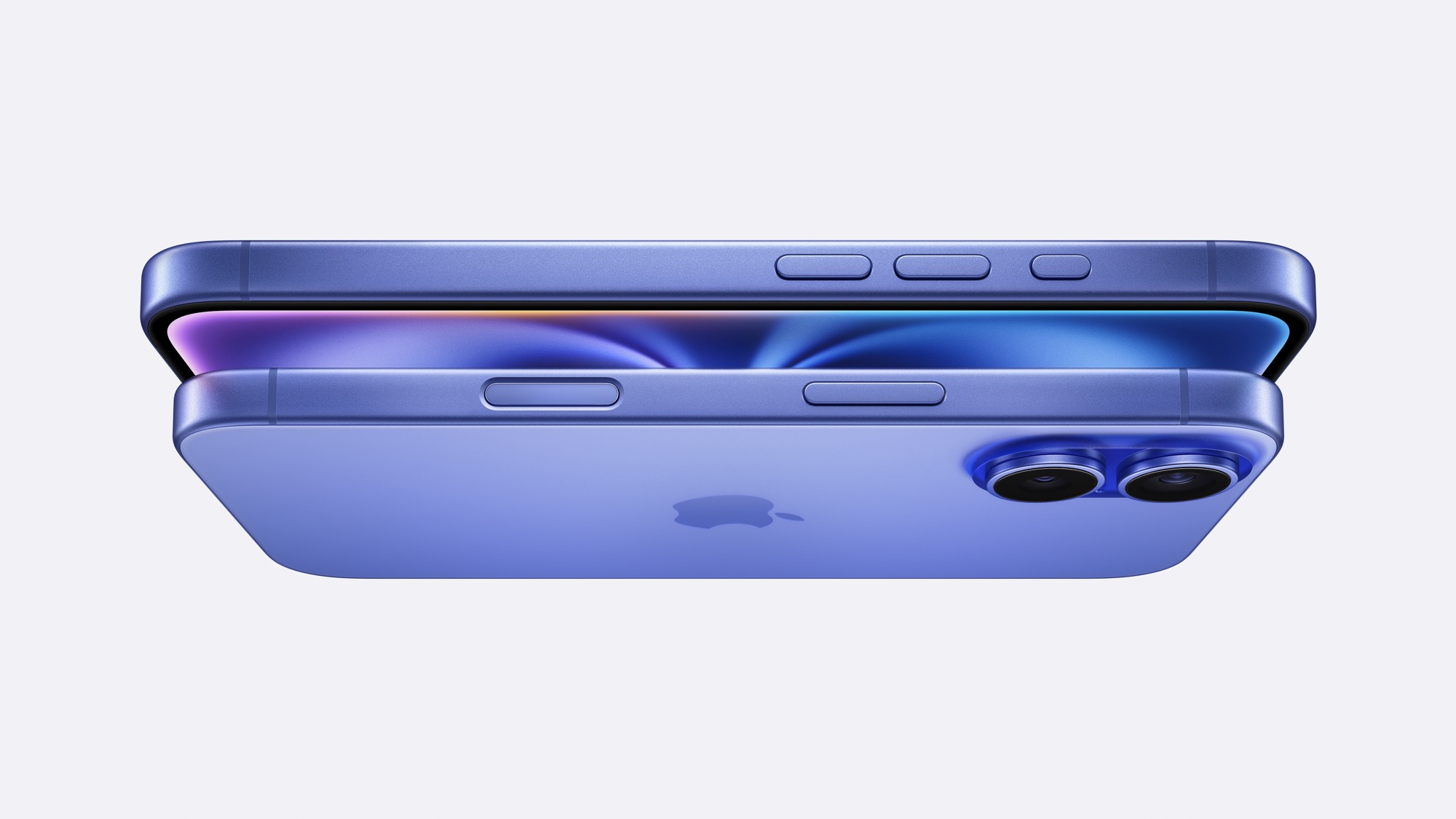
While the iPhone 16 still follows in the aesthetic footsteps of its predecessor, it does get some unique design changes. These include a new tandem camera placement, returning to the arrangement of the iPhone 12, and a pill-shaped camera bump more reminiscent of the iPhone XS era.
As Apple’s Kaiann Drance said during the presentation of the new iPhone models, this year, the company’s materials engineers have managed to “celebrate color in a whole new way” by refining the infusion process that began with last year’s iPhone 15. Instead of the washed-out pastels of the first-generation process, the iPhone 16 models get a much bolder and richer pallet with more creative names to match. Ultramarine, Teal, and Pink join the standard black and white finishes.
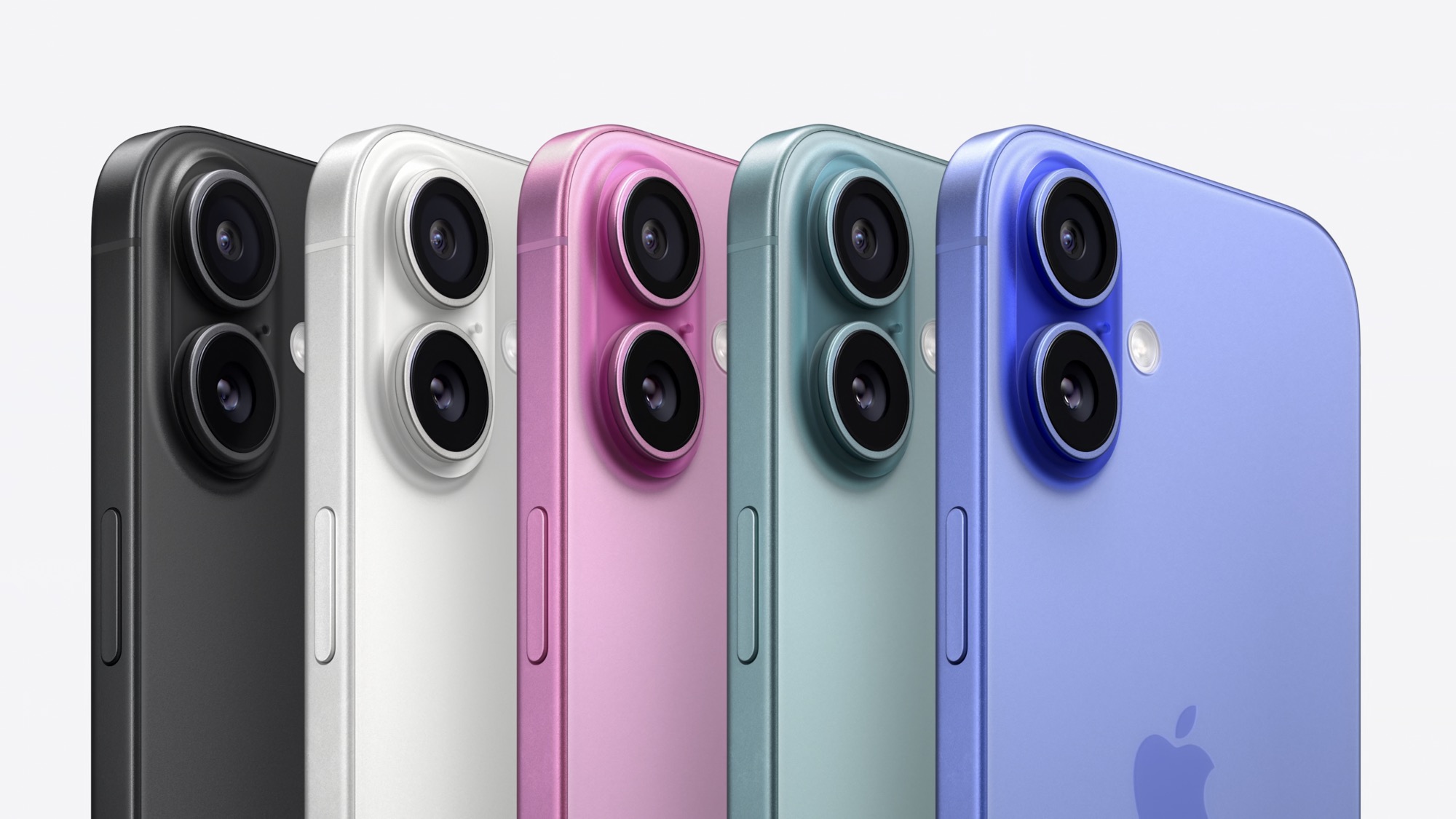
Apple has also upped the durability with even tougher Ceramic Shield glass, which Drance says is twice as durable as the glass found on any other smartphone and 50% tougher than the original Ceramic Shield introduced with the iPhone 12 four years ago.
The standard iPhone 16 and iPhone 16 Plus also replace the ring/silent switch with the Action button that debuted on last year’s iPhone 15 Pro models.
The Camera Control
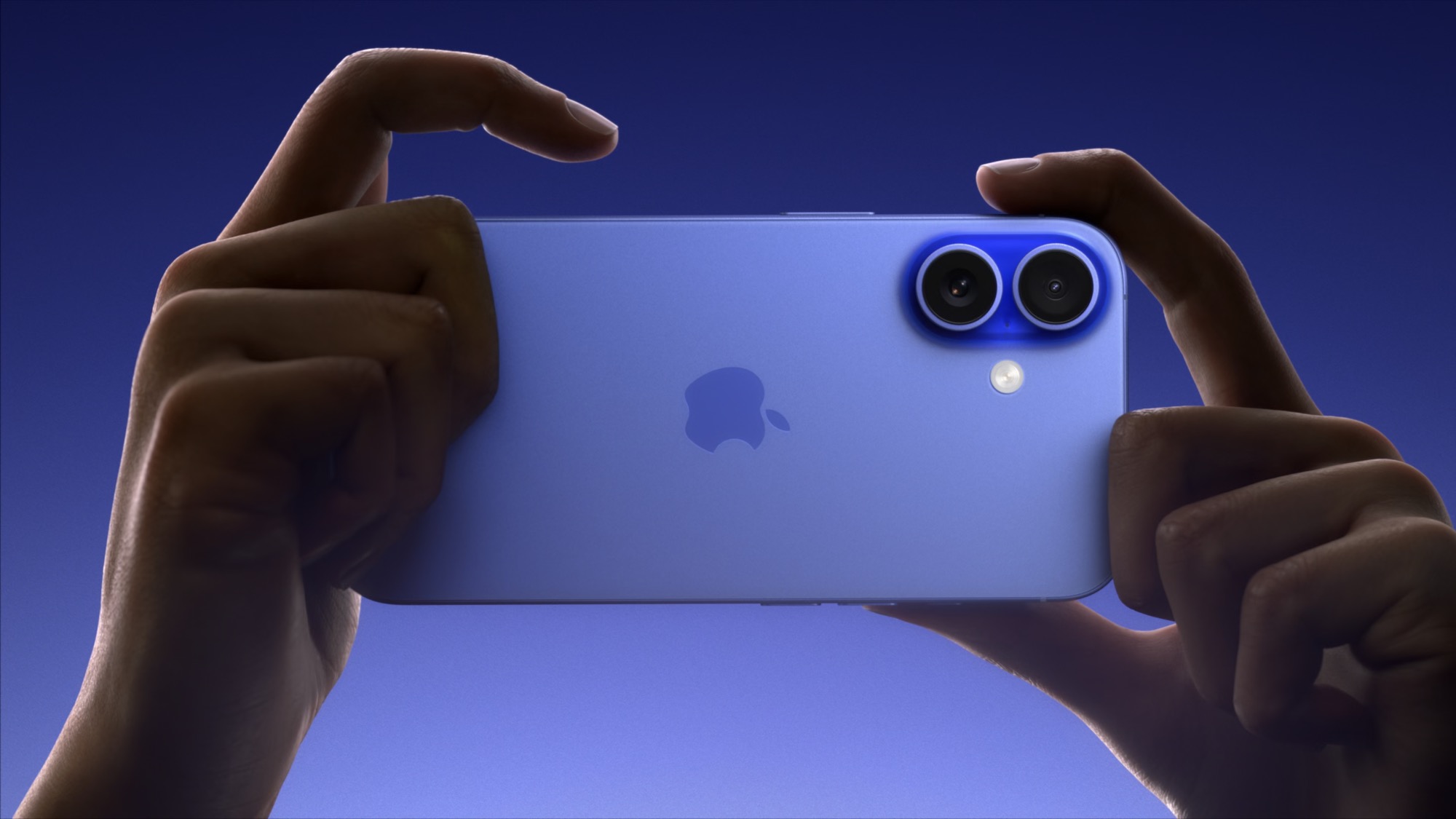
Perhaps the most exciting change to the iPhone 16 is the addition of a new button to enhance the photography experience. While this has colloquially been dubbed the “Capture” button by analysts and leakers over the past few months, Apple is calling it the Camera Control, and it’s everything we’ve been expecting.
In short, the Camera Control will make taking pictures with your iPhone much more like using a traditional point-and-shoot camera. No more fumbling with touchscreen controls; press the Camera Control button, and the built-in Camera app will open, ready to shoot.
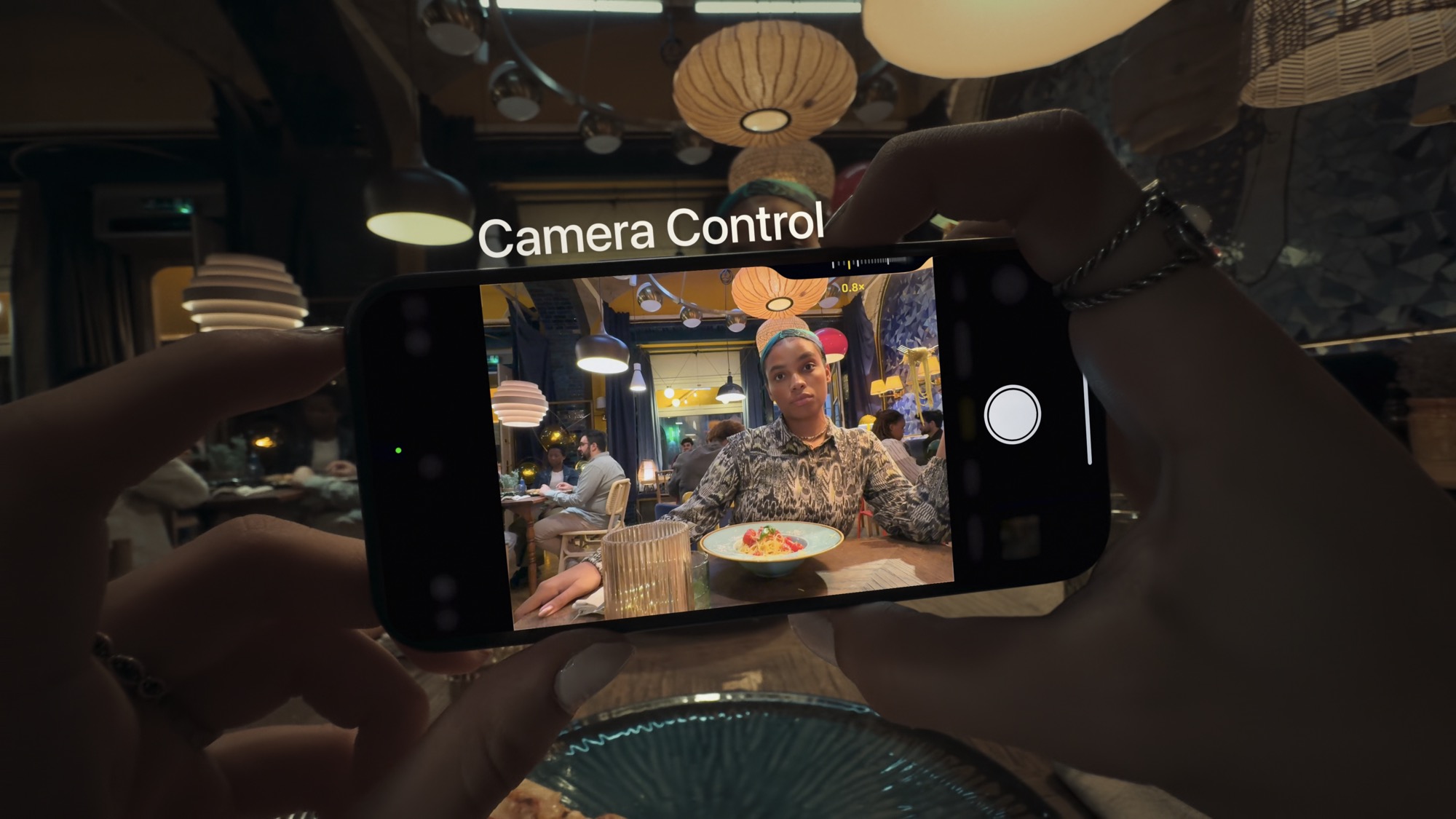
However, it goes beyond just opening the Camera app. After all, the Action button can already do that. The Camera Control is a capacitive touch button that will let you adjust all sorts of features just by sliding your finger. It uses haptic feedback to make it feel like an actual button when you press it and respond to two levels of pressure, so you can zoom, adjust exposure, focus, and more with a light press and various swipe gestures, and then use a firmer press to take a picture or hold your finger on it to record a video.
When using the Camera Control, a new user interface will dynamically appear beside the button to show your adjustments or other controls. To make things even more fun, third-party developers can access this button to let you perform different actions specific to their apps.
The Cameras
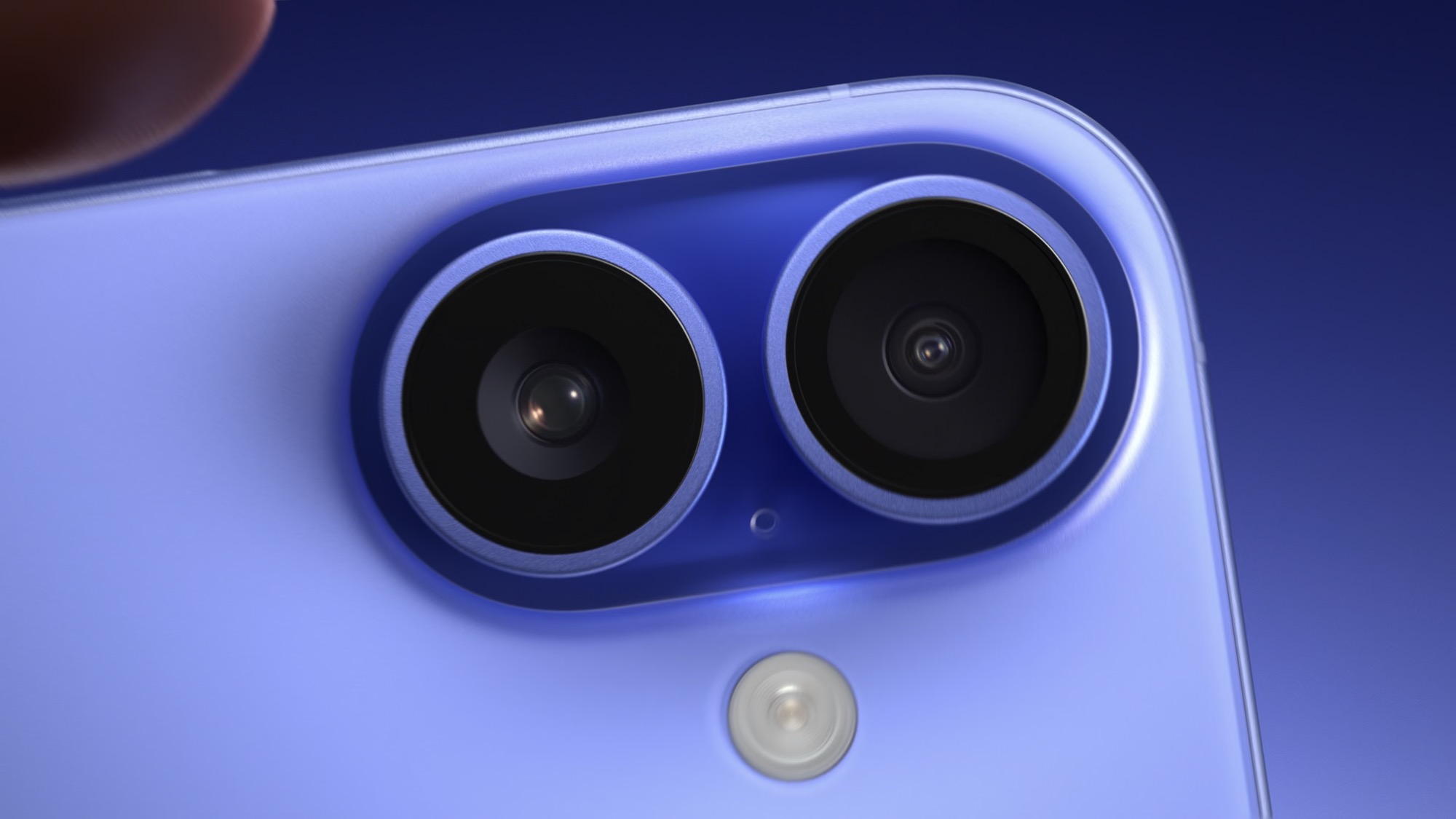
Apple is rebranding its primary camera as the “Fusion” camera in this year’s iPhone 16 lineup to highlight the multipurpose capabilities of its 48-megapixel (MP) sensor.
However, the name is the most significant change to the primary camera hardware over last year’s model. While the underlying sensor may have improved, the specs remain the same: a 48MP sensor with an f/1.6 aperture, capable of capturing 24MP and 48MP photos using computational photography with a 2X pixel-cropped virtual zoom.
That said, the Fusion lens gets an anti-reflective coating that should help reduce lens flare, while the Ultra Wide sensor receives a slight boost to an f/2.2 aperture, which Apple says delivers 2.6x more light for ultrawide shots.
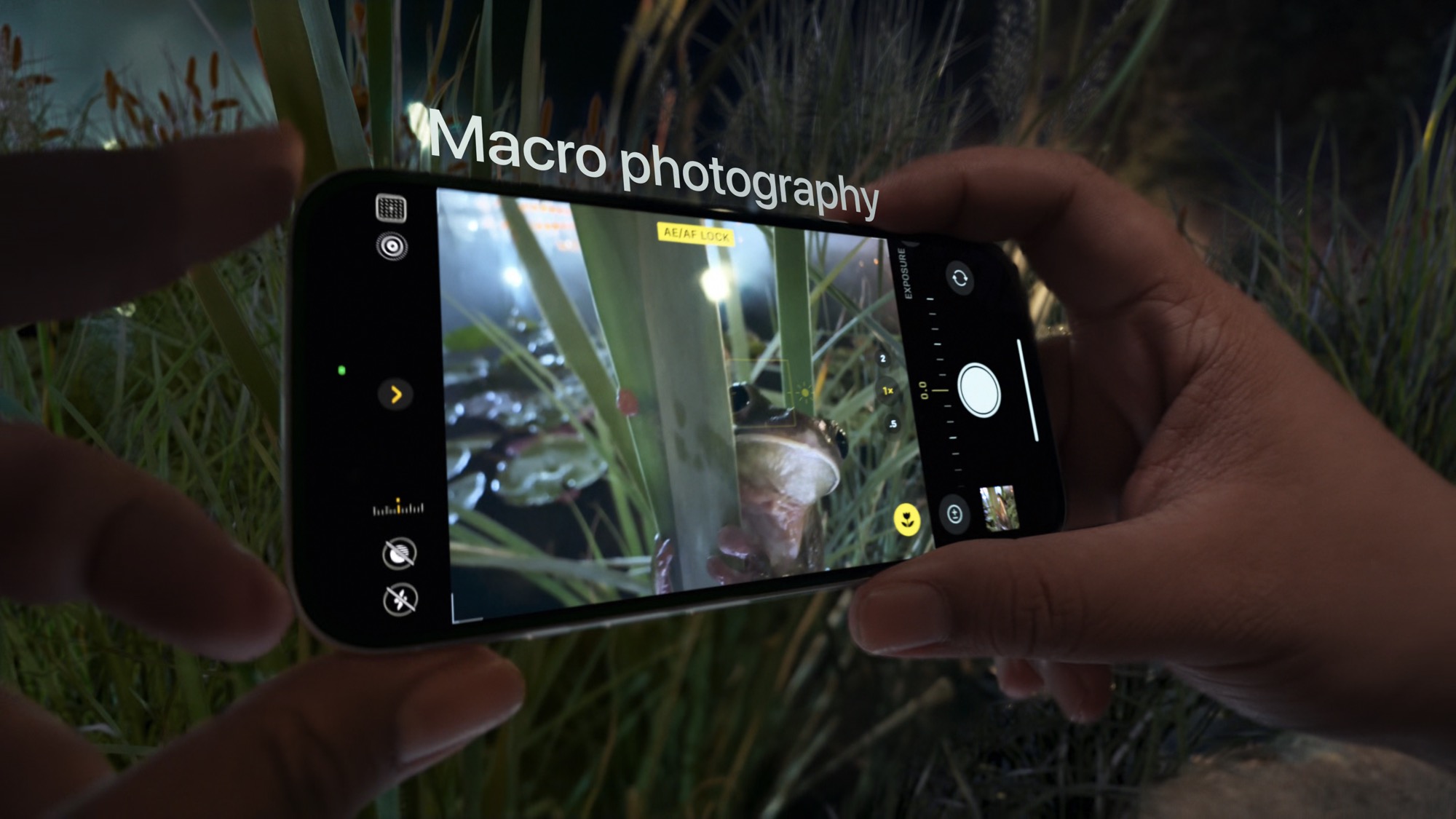
There’s also support for macro photography and 4K Dolby Vision video recording, two features previously exclusive to the iPhone Pro models, plus machine-learning algorithms that can significantly reduce wind noise when recording videos.
The new tandem camera arrangement also allows Apple to add Spatial photo and video capture to the standard iPhone models. This feature was introduced in iOS 17.2 last year for the iPhone 15 Pro and iPhone 15 Pro Max.
Visual Intelligence
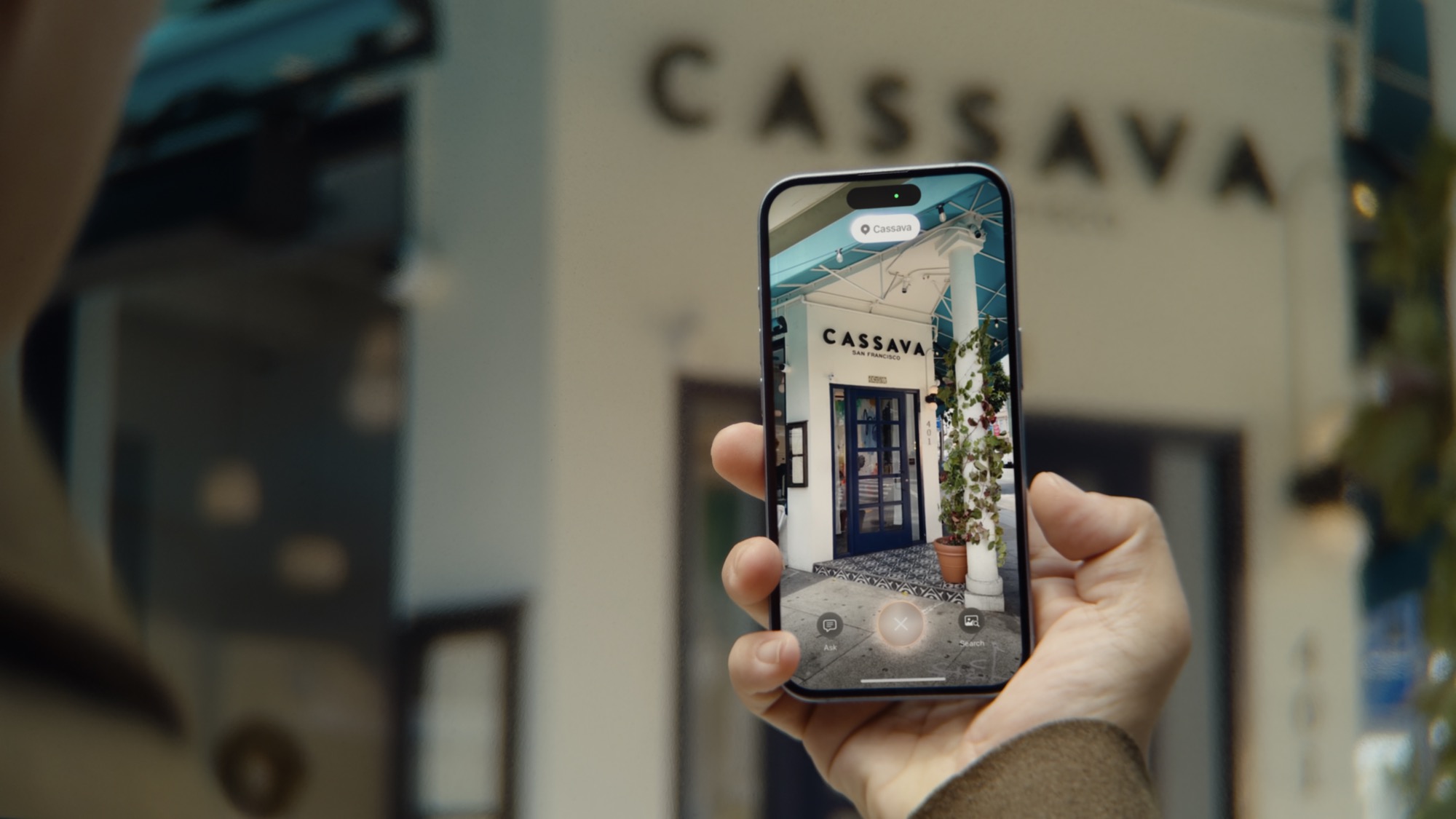
Apple’s senior VP of software engineering, Craig Federighi, came on to talk about Apple Intelligence. While most of this was a rehash of what we’ve already heard at the company’s June Worldwide Developers Conference (WWDC), it turns out the iPhone 16 has one new trick up its sleeve, thanks to the Camera Control.
Dubbed Visual Intelligence, it’s effectively Apple’s take on a built-in version of Google Lens. Hold down the Camera Control button while pointing at something like a restaurant, a poster for an event, or even an animal, and Apple Intelligence will look up the image to provide more relevant information. That could be reviews, concert tickets, or the breed of dog you’re looking at.
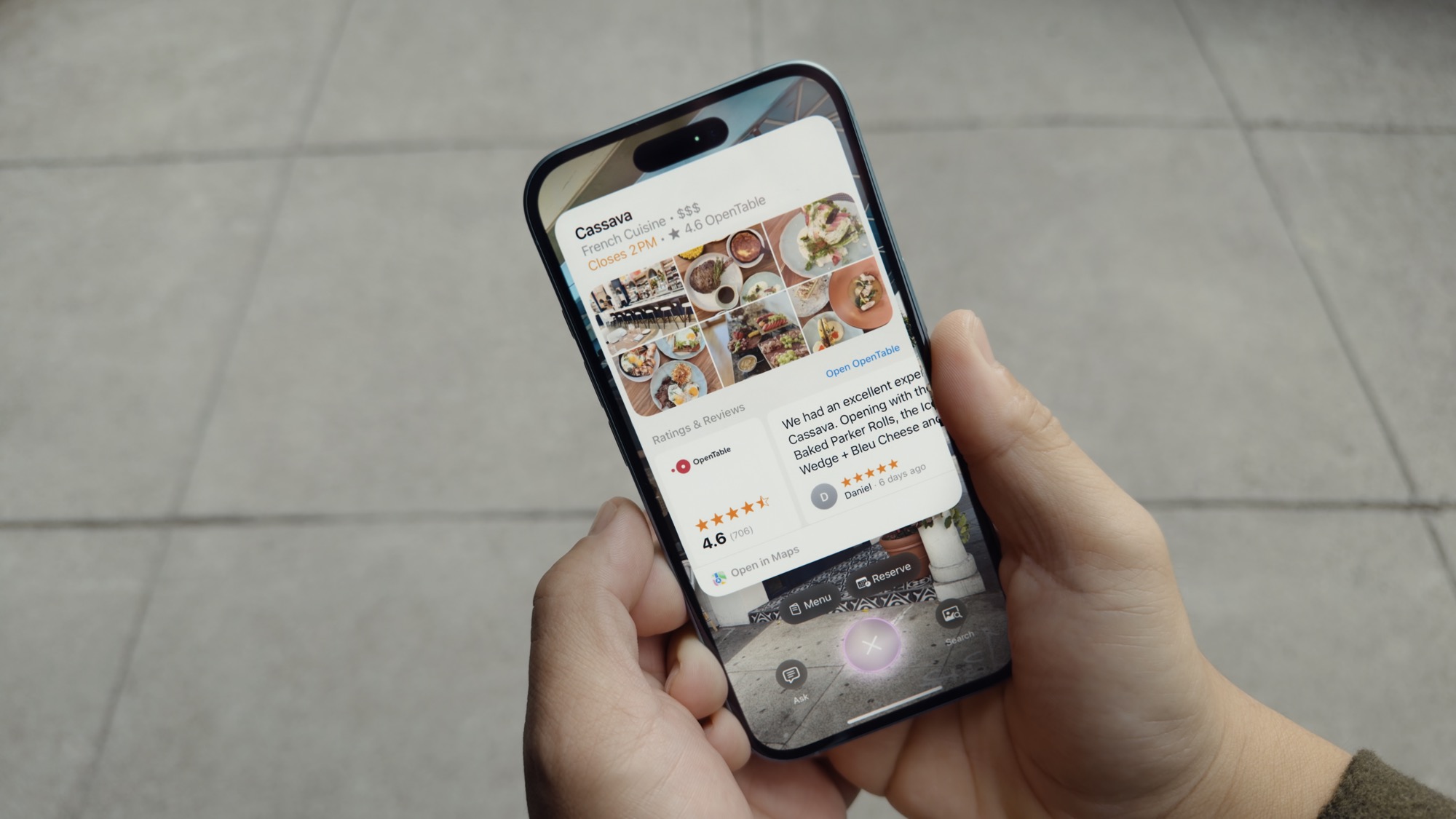
Federighi said that the Camera Control and Visual Intelligence can also trigger lookups via third-party apps and services, such as performing a Google Search or asking ChatGPT for more information. Presumably, developers will also be able to plug into this somehow.
Visual Intelligence won’t be available at launch; Federighi said it’s coming later this year, but it’s unclear whether that will be when Apple Intelligence arrives in iOS 18.1 or sometime after that.
The A18 Chip
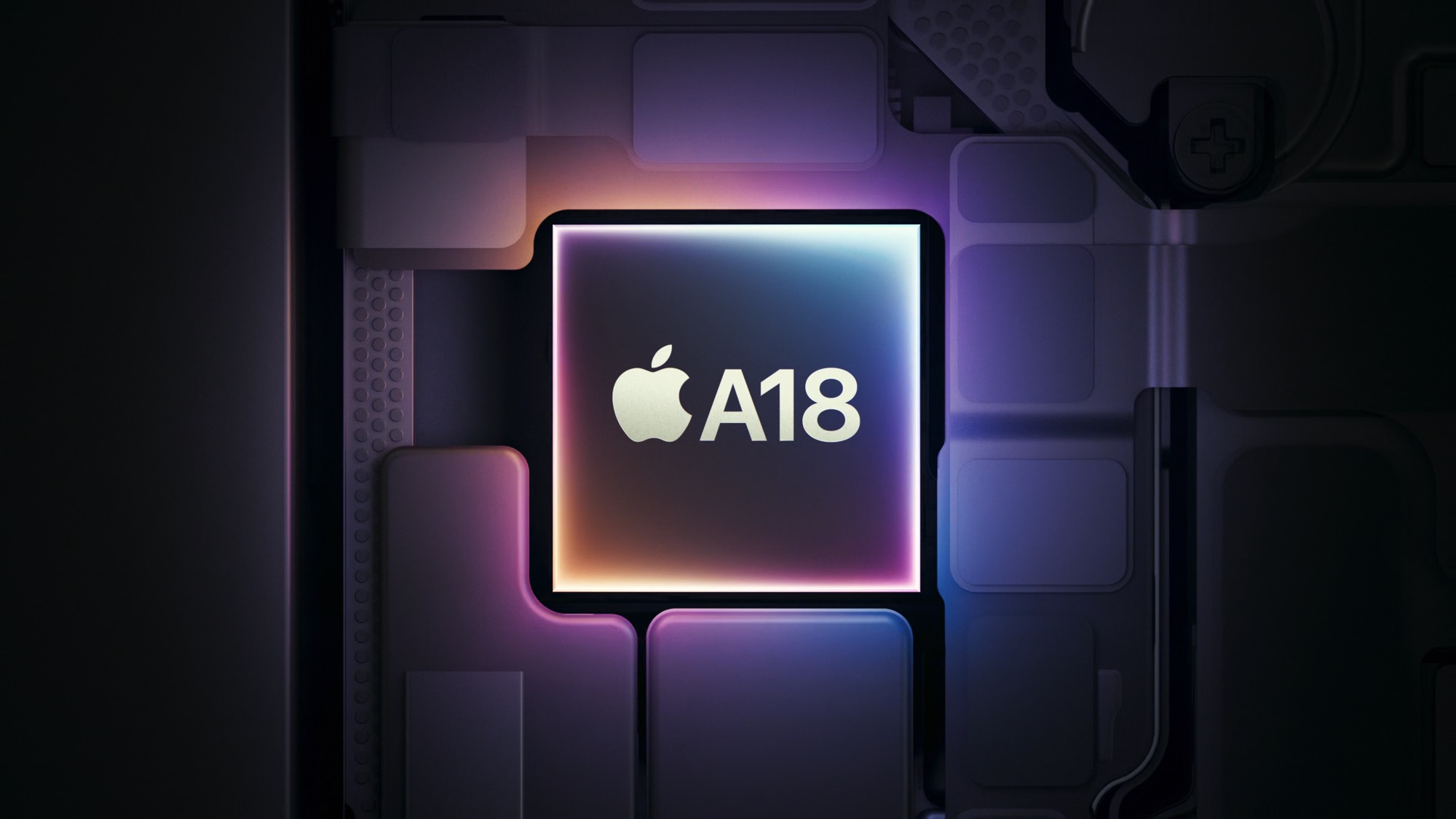
The iPhone 16 leaps two generations ahead of its predecessor, moving from the A16 chip to a new 3nm A18 chip. Of course, there never was a non-pro A17 chip, and now it’s probably safe to say we’ll never see one.
The A18 is naturally optimized for Apple Intelligence, with a 16-core Neural Engine that’s two times faster for machine learning models and an upgraded memory subsystem that’s 17% faster. Apple didn’t say anything about RAM (it never does), but it’s a safe bet that the iPhone 16 packs in at least 8 GB to meet the requirements for Apple’s AI large language models (LLMs).
Beyond Apple Intelligence, the A18 chip also means the iPhone 16 is now a gaming powerhouse. There’s a six-core CPU that’s 30% faster than the iPhone 15, plus a 5-core GPU that’s 40% faster and uses 35% less power.
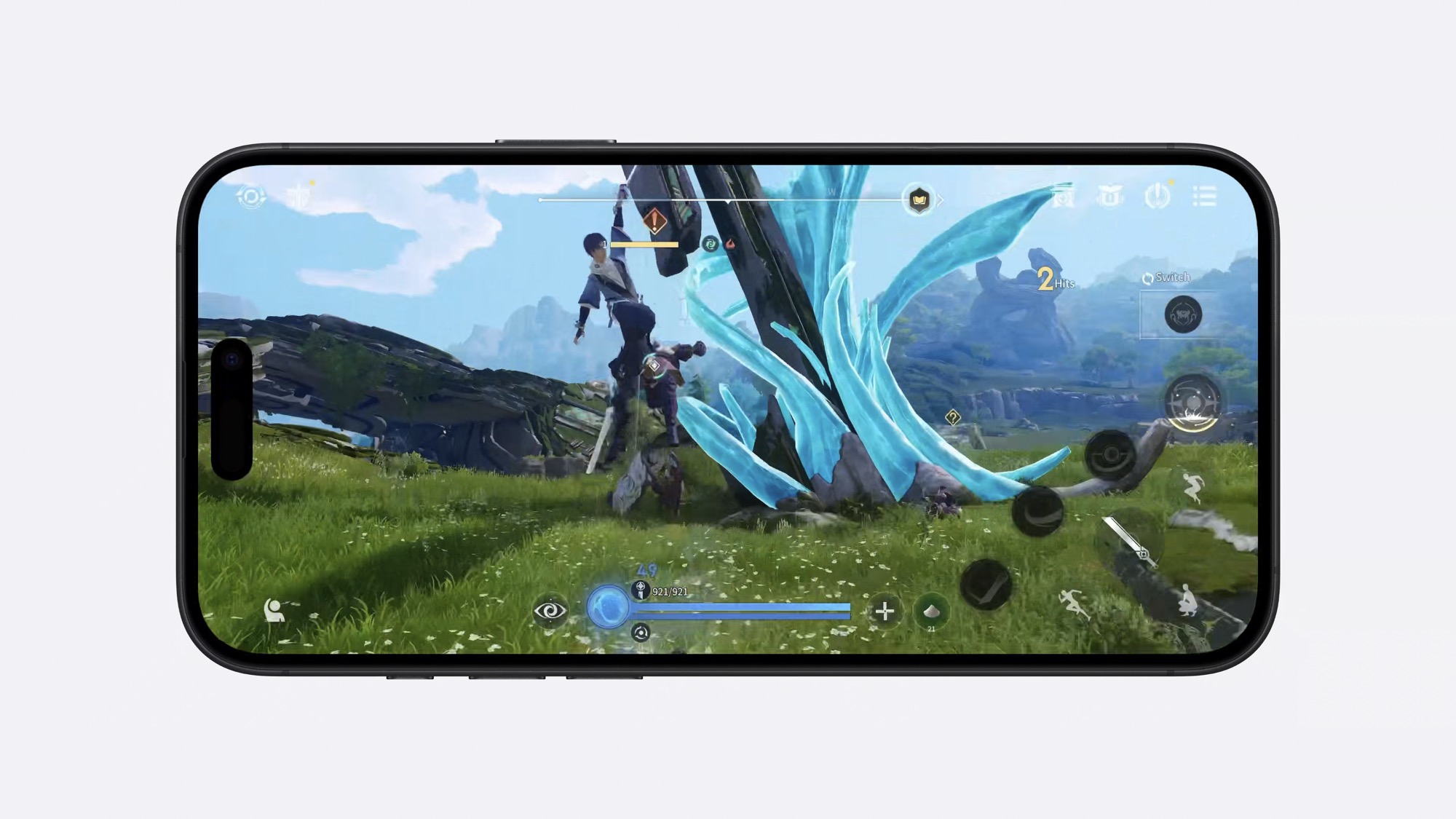
Combined with some significant thermal design improvements, the iPhone 16 can deliver 30% higher sustained performance than its predecessor while also delivering gaming features like hardware-accelerated ray tracing. This means the same AAA games we saw arrive for the iPhone 15 Pro last year will be fully playable on the iPhone 16 — and they’ll likely perform even better than they do on last year’s Pro model.
The improved power efficiency translates to longer battery life, which is enhanced even more by a larger cell. Apple didn’t go into specifics during the presentation, but according to the specs page, the iPhone 16 will deliver up to 22 hours of video playback versus 20 hours on the iPhone 15. Despite rumors of a smaller battery, the iPhone 16 Plus now promises up to 27 hours of stored video playback and 24 hours of streaming video playback.
Pricing and availability
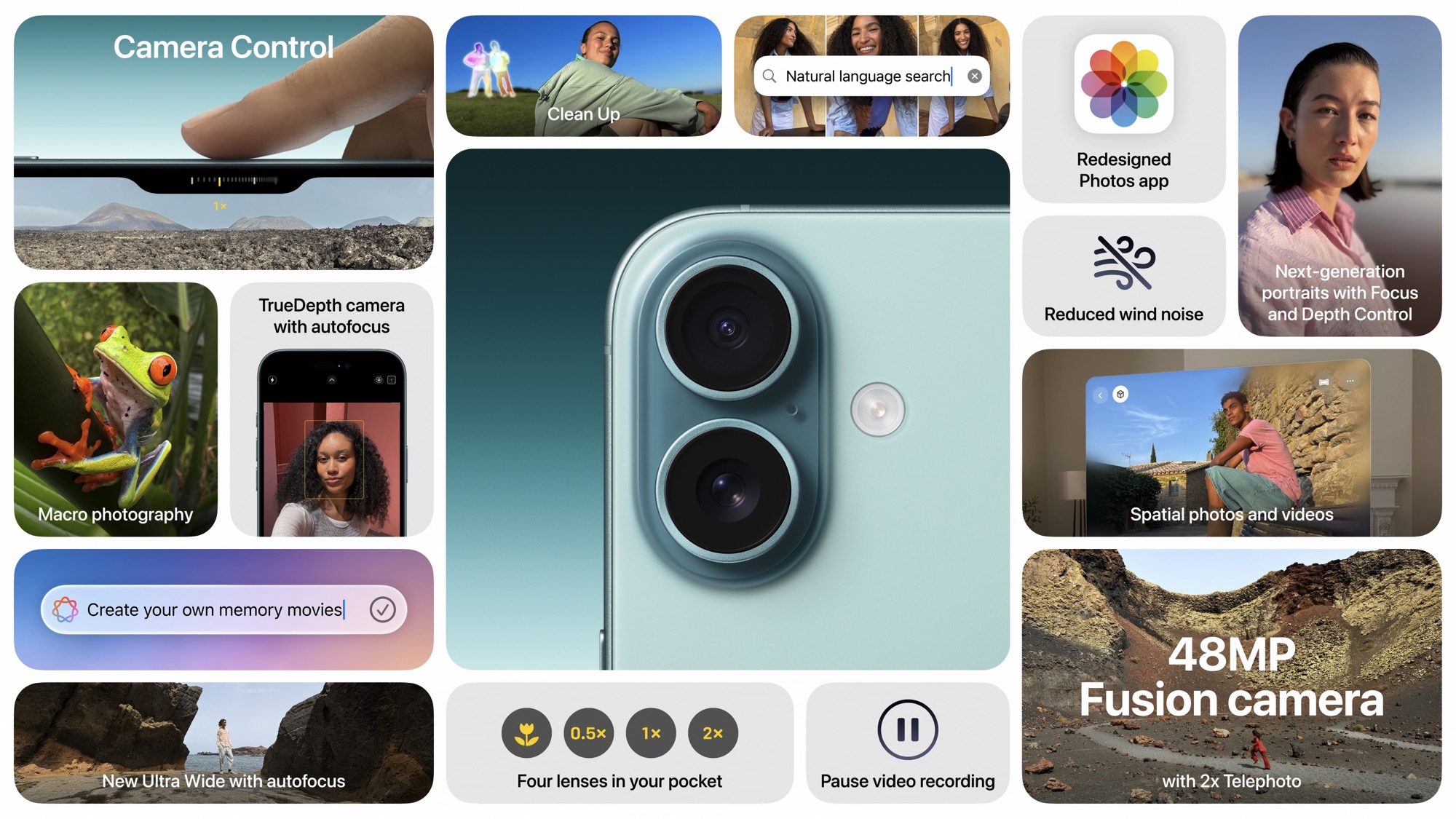
Despite all these improvements, Apple has managed to keep the price of the iPhone 16 and iPhone 16 Plus the same as last year’s models. The iPhone 16 starts at $799, and the iPhone 16 Plus starts at $899 for the 128 GB versions and goes up to $1,099 and $1,199 for the 512 GB models.
The iPhone 16 and iPhone 16 Plus will be available for pre-order this Friday, September 13, and are expected to arrive in stores by next Friday, September 20.







